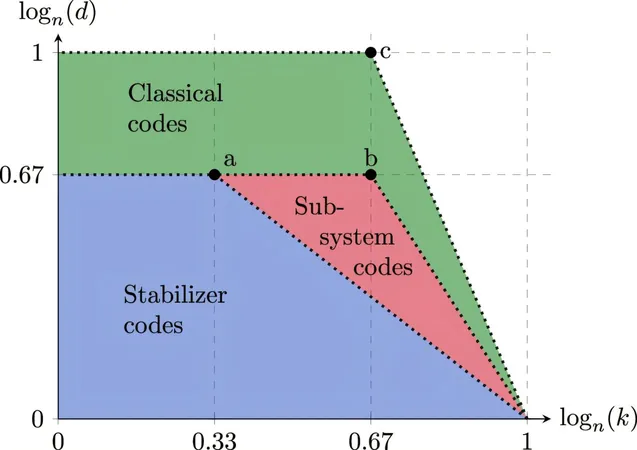
Norway's Outdated Military Restrictions: A Call for Change in the Face of Growing Threats
2024-11-24
Author: Yu
Introduction
Norway’s self-imposed security and defense restrictions, particularly in the Finnmark region, have become increasingly contentious, especially given the changing geopolitical landscape in Europe. Historically, these limitations were designed to avoid provoking Moscow, which has maintained its key naval nuclear assets near the Kola Peninsula. However, as various NATO countries—including Sweden, Britain, and the United States—conduct surveillance missions over Russia's northern territories, these restrictions seem increasingly misplaced.
Current Restrictions and NATO Operations
Currently, when NATO surveillance aircraft operate, they must circumvent Norway's northeast corner, creating an inefficient detour through international airspace in the Barents Sea. At the same time, while NATO troops can execute training exercises in East Lapland, Russia's border region with Finland, similar activities are barred in Varanger, Norway. This exclusion occurs despite Russia's ongoing GPS signal jamming and provocative military drills, which escalate tensions in the region.
Expert Opinions
Professor Njord Wegge, an expert in military studies from UiT The Arctic University of Norway, argues that these restrictions, reflective of Cold War-era concerns, are now outdated. He stresses that the geopolitical realities have shifted significantly. "Today's security landscape is interconnected with the rest of Europe," Wegge asserts, noting that ongoing Russian aggression in Ukraine and beyond necessitates a reassessment of Norway’s military policies.
Wegge further suggests that the survival of Norway's sovereignty and democratic governance relies on revising its restrictive policies. "There is an urgent need to evaluate these self-imposed limitations in light of modern geopolitical challenges," he emphasizes. He believes that such outdated policies could lead to confusion and insecurity regarding joint military operations with allies, especially as Finland recently allowed U.S. troops to be stationed closer to their border with Russia.
Finland and the United States Agreement
In December, Finland signed a landmark agreement with the United States that permits American troops to be based in Ivalo, just a stone’s throw from the Russian border. This agreement is indicative of a broader NATO strategy to bolster defense in the region, where American military collaboration with Finnish forces has ramped up significantly, including joint exercises at the Rovaniemi airbase.
NATO’s Adaptation and Norwegian Policies
As NATO adapts to a more threatening environment, including Russia’s expansionist actions, the issue of military cooperation encapsulates the urgency for Norway to update its policies. A recent large-scale NATO exercise, Nordic Response, saw thousands of soldiers from northern Sweden and Finland cross into Finnmark, where Norwegian policies complicated logistical efforts.
Defense Minister Bjørn Arild Gram recently highlighted the necessity for streamlined military transport across the Nordic countries, as the involved nations signed an agreement aimed at improving rapid response capabilities. While he reinforced this commitment, Prime Minister Jonas Gahr Støre has stuck to his stance, indicating that there are no plans to lift restrictions near the Russian border.
Growing Tensions
Tensions are likely to escalate if these outdated military rules persist. Historical context plays a large role in the current dialogue, particularly in light of recent vocal warnings from Russian officials about increased NATO activities in the Arctic. Russia's Foreign Ministry has cautioned that the militarization of Norway's northern region could lead to heightened tensions rather than improved security.
Analysts' Perspectives
Analysts urge that it's time for Norway to reassess its approach. Defense expert Per Erik Solli observes the evolution of military restrictions, noting that they have adapted since the Cold War, particularly following key events in 2014 and 2022. While some restrictions have lessened, significant limitations remain regarding allied military operations in Finnmark, which could marginalize Norway's strategic flexibility amidst a rapidly changing security environment.
Conclusion
In conclusion, Norway stands at a crossroads where its historical policies must be examined against the backdrop of current threats. If unchanged, these self-imposed restrictions could hinder not only Norway’s security but also NATO’s collective defense capabilities in the north, an area that increasingly depends on united efforts against a common adversary. The cry for a policy overhaul resonates loud and clear: adaptability is key in maintaining sovereignty and ensuring peace in a region fraught with tension.



 Brasil (PT)
Brasil (PT)
 Canada (EN)
Canada (EN)
 Chile (ES)
Chile (ES)
 España (ES)
España (ES)
 France (FR)
France (FR)
 Hong Kong (EN)
Hong Kong (EN)
 Italia (IT)
Italia (IT)
 日本 (JA)
日本 (JA)
 Magyarország (HU)
Magyarország (HU)
 Norge (NO)
Norge (NO)
 Polska (PL)
Polska (PL)
 Schweiz (DE)
Schweiz (DE)
 Singapore (EN)
Singapore (EN)
 Sverige (SV)
Sverige (SV)
 Suomi (FI)
Suomi (FI)
 Türkiye (TR)
Türkiye (TR)